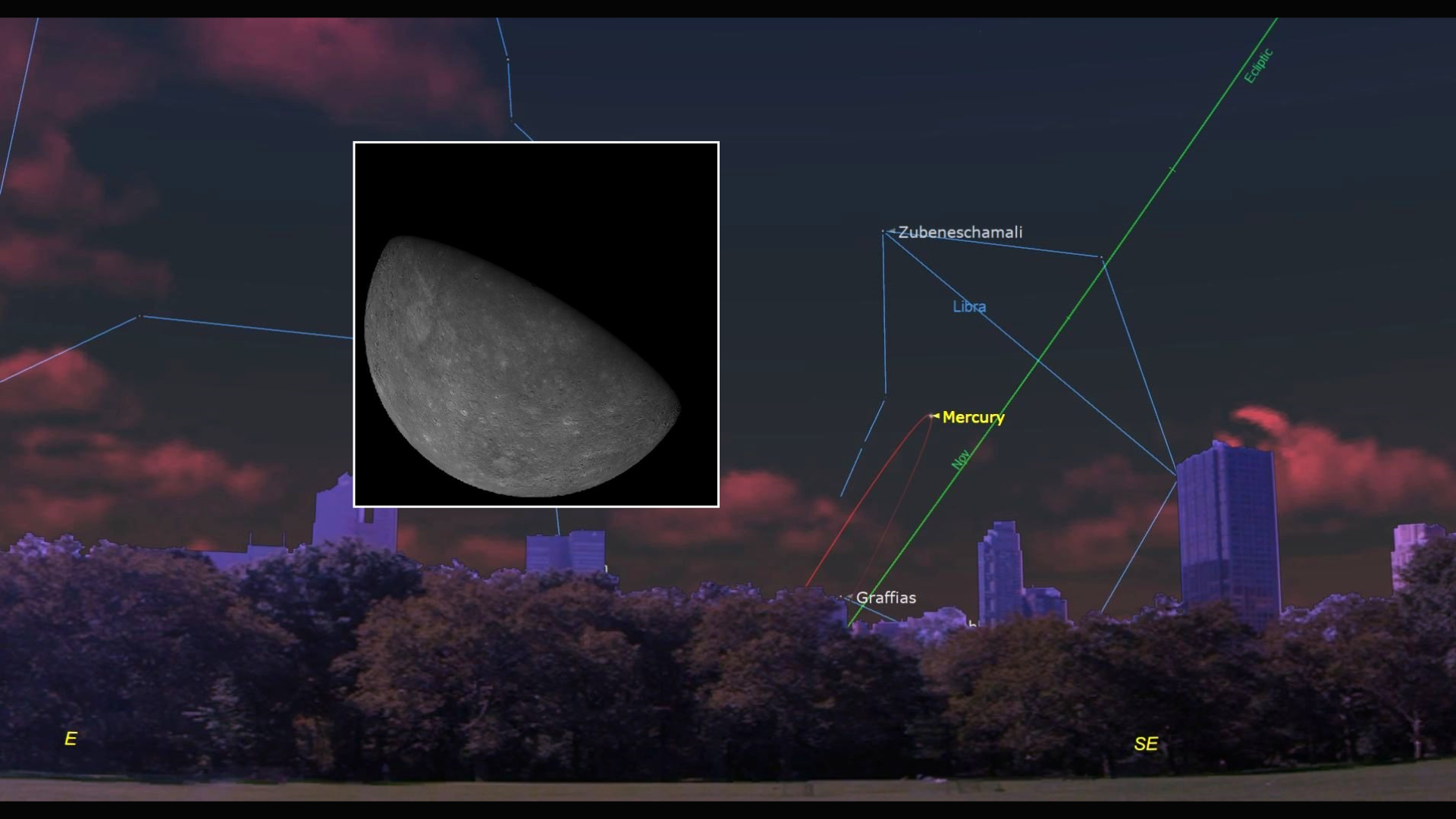Triple Play! See Jupiter, Spica and the Moon Rendezvous Tonight

Jupiter teams up with the moon and the bright star Spica tonight (March 14), forming a triangle configuration in the overnight hours to put on an eye-catching show.
Jupiter, the largest planet in the solar system, shines as a brilliant silvery "star" in Leo low in the east-southeast sky around 10 p.m. local daylight time. Jupiter will arrive at opposition to the sun on April 7, across Earth from the star, and thereafter will appear to climb higher in the evening sky in the weeks to come.
Currently, Jupiter is ready for telescopic observing by midnight when it will stand about one-third of the way up from the horizon to that point directly overhead (called the zenith). It reaches its highest position in the south around 2:45 a.m., heading toward its setting in the west-southwest after sunrise. [The Best Night Sky Events of March (Sky Maps)]
This evening, take note of Jupiter sitting just 3.5 degrees to the upper right of a nearly full moon, two nights past full phase. Usually when the moon is this bright, it will overwhelm most stars that are this close to it, but not Jupiter. I'm sure more than a few folks who take a casual look at the moon tonight will wonder what that bright object is just off to its left — maybe some will call their local radio station or police precinct to report a UFO!
If you look below Jupiter or to the lower right of the moon tonight you'll see Spica, the brightest star of the constellation Virgo. Spica shines with a bluish tint, but glows only about 1/20th as bright as Jupiter. Unlike most of the ancient constellations, Virgo shows no distinct pattern of stars that attracts attention. There is little of interest for the naked eye in this large region except Spica itself.
Spica, the moon and Jupiter will form a distinctive triangle in the late-night sky — a triple play of sorts involving our natural satellite, a bright star and the largest planet in our solar system.
"Big Jupe" is the most consistently interesting object in the solar system after the moon and the sun and has always held a special place in the hearts of telescope viewers. Besides its prominent cloud belts, the smallest telescope — or even steadily held 7-power binoculars — will reveal the four bright satellites of Jupiter as tiny stars nearly in line, changing their places in the line as they revolve around the planet in orbits nearly edgewise to us. When it's close to the moon late this evening, for example, we will see three satellites (Callisto, Ganymede and Europa) on one side of Jupiter, while the fourth (Io) remains all by itself on Jupiter's opposite side.
Breaking space news, the latest updates on rocket launches, skywatching events and more!
And if clouds prevent you from seeing the moon pair off with Jupiter on Tuesday night, don't fret. You'll get another chance to see a repeat performance on the evening of Monday (April 10), when a full moon will sit to Jupiter's lower left.
Joe Rao serves as an instructor and guest lecturer at New York's Hayden Planetarium. He writes about astronomy for Natural History magazine, the Farmer's Almanac and other publications, and he is also an on-camera meteorologist for Fios1 News in Rye Brook, New York. Follow us @Spacedotcom, Facebook and Google+. Original article on Space.com.

Joe Rao is Space.com's skywatching columnist, as well as a veteran meteorologist and eclipse chaser who also serves as an instructor and guest lecturer at New York's Hayden Planetarium. He writes about astronomy for Natural History magazine, Sky & Telescope and other publications. Joe is an 8-time Emmy-nominated meteorologist who served the Putnam Valley region of New York for over 21 years. You can find him on Twitter and YouTube tracking lunar and solar eclipses, meteor showers and more. To find out Joe's latest project, visit him on Twitter.
